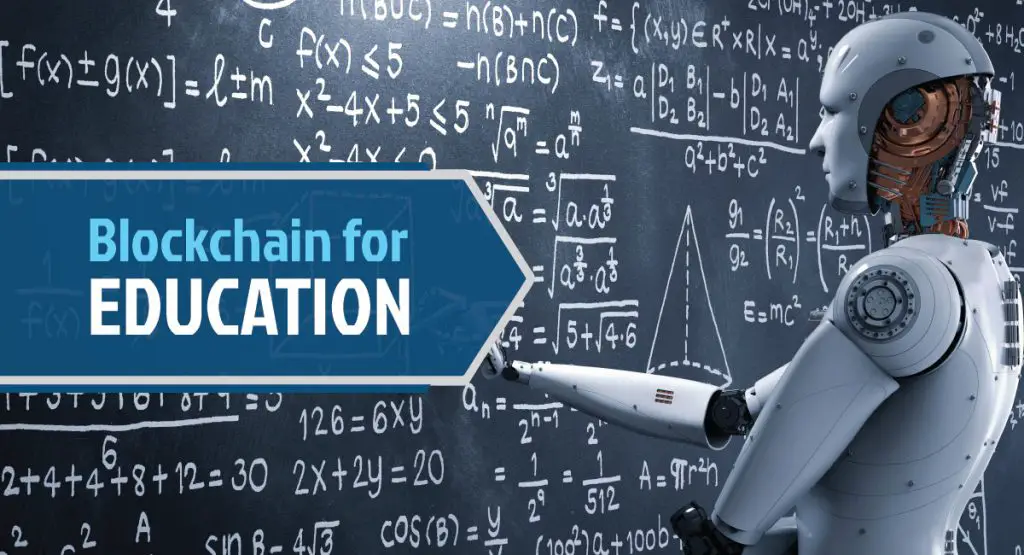[The Promise And Perils Of Blockchain In Education]
Executive Summary

Blockchain, a decentralized and distributed ledger technology, holds significant promise for transforming education by enhancing data security, transparency, and efficiency. However, understanding the potential pitfalls is crucial to harness its benefits effectively. This article explores the potential of blockchain in education, examines its advantages and disadvantages, and provides key considerations for successful implementation.

Introduction
The transformative power of technology in education is undeniable, and blockchain is emerging as a game-changer. Its potential to revolutionize educational systems, empower students, and enhance learning experiences is immense. However, like any technology, it comes with both promises and perils. This article sheds light on the intricacies of blockchain, navigating its potential benefits while acknowledging the challenges it may present.
5 Key Subtopics:
1. Decentralized Data Management
- Distributed ledger system: Blockchain stores data across multiple interconnected computers, preventing centralized control and ensuring data integrity.
- Immutable records: Transactions recorded on the blockchain are permanent, providing an audit trail and preventing unauthorized alterations.
- Enhanced security: Data stored on the blockchain is encrypted and protected by robust cryptographic measures, safeguarding sensitive student information.
2. Transparency and Traceability
- Open and auditable: Blockchain transactions are publicly visible, enabling stakeholders to track activities and monitor resource allocation.
- Improved accountability: Traceability of funds and resources on the blockchain enhances transparency and reduces instances of fraud.
- Trustless environment: Blockchain eliminates the need for third-party intermediaries, fostering trust and confidence among participants.
3. Secure and Efficient Credentialing
- Verifiable certificates: Blockchain-based credentials provide tamper-proof proof of achievements, simplifying verification processes and reducing forgery.
- Automated issuing: Blockchain can automate the issuance of credentials, streamlining processes and reducing administrative burdens.
- Recognition and portability: Digital credentials stored on the blockchain are universally recognized and easily shared, enabling students to showcase their skills globally.
4. Personalized Learning and Adaptive Assessments
- Tailored experiences: Blockchain enables personalized learning pathways by providing tailored content and assessments based on individual student data.
- Adaptive assessments: Blockchain-based assessments can adjust difficulty levels based on student performance, providing real-time feedback and targeted learning interventions.
- Data-driven insights: The wealth of data collected on the blockchain enables educators to gain insights into student progress, identify areas for improvement, and adapt teaching strategies accordingly.
5. Innovative Applications and Use Cases
- Microcredentials: Blockchain can facilitate the issuance of microcredentials for skills acquired through online courses or non-traditional learning experiences.
- Skill marketplaces: Blockchain-based platforms can create marketplaces where students and employers can connect for skill-based hiring and learning opportunities.
- Gamification and rewards: Blockchain-based reward systems can motivate students and foster engagement through gamification and recognition of achievements.
Conclusion
The potential of blockchain in education is boundless. Its decentralized, transparent, and secure nature offers unprecedented opportunities for enhancing data management, improving transparency, and personalizing learning experiences. However, careful consideration of potential pitfalls, such as technical complexity and regulatory uncertainties, is essential. By embracing a collaborative approach, leveraging existing expertise, and prioritizing privacy and security, we can harness the transformative power of blockchain to create equitable, accessible, and inclusive educational systems for the future.
Keyword Phrase Tags:
- Blockchain in Education
- Decentralized Data Management
- Secure Credentialing
- Personalized Learning Adaptive Assessments
- Innovative Blockchain Applications


I don’t think blockchain is not a good fit for education. It’s too slow and expensive, and it’s not clear how it would improve on the current system.
Blockchain has the potential to revolutionize education by making it more secure, transparent, and efficient. However, there are also some challenges that need to be addressed, such as scalability and cost.
I think blockchain is a great idea for education. It could help to make sure that students’ records are secure and tamper-proof.
I’m not sure if blockchain is the best solution for the problems in education. It seems like a lot of hype to me.
Blockchain is the future of education! It’s going to make everything better!
Blockchain? More like a blockhead!
I heard that blockchain is going to make it so that students can’t cheat on their homework anymore. Hahahaha!
I’m really excited about the possibilities of blockchain in education. I think it has the potential to make a real difference.
Blockchain is just another buzzword. It’s not going to change anything.